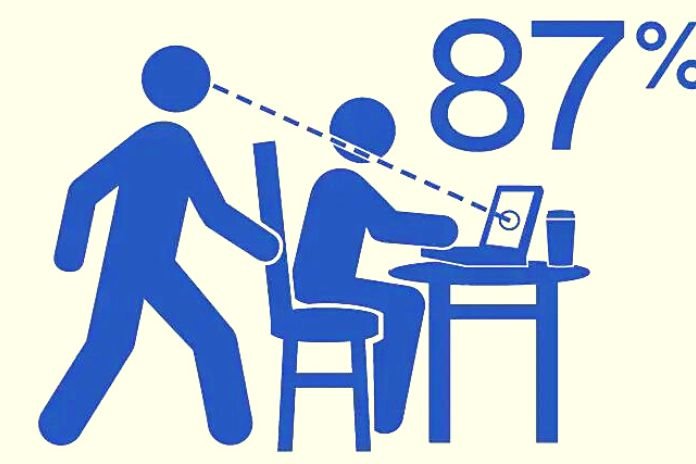The harmless habit of looking away is a strategy some people use to get information. Know the dangers of visual hacking in the corporate environment. Whenever we think of information theft and hacking, it’s common to think of cybercriminals writing lines and lines of code in a dark room.
All this is in search of deciphering the password to access a server or system. Undoubtedly, this type of scene must happen in some places worldwide, but this scene is very Hollywood. However, this image makes us forget that the “hacker” may be closer than we think.
For example, your password or confidential data does not need to travel from one computer to another or even be a phishing target for a scam. Just a peek at who’s next door.
However, this (seemingly) harmless habit of looking to the side is a strategy used by some people to obtain secret information, such as passwords, credit card numbers, and so much other data that can be used in favor of scams.
How Does Visual Hacking Work In The Corporate World?
Inside an office, not everyone has a particular working environment. Many companies create large rooms shared by numerous people. In this environment, the most significant cases of visual hacking happen. The intention is the same: to obtain information and data that is not open to everyone. What changes in the modus operandi? While some “visual hackers” observe the screen and documents, others take pictures, record videos, and even subtract essential papers to make copies.
The matter is so severe that 3M conducted an experiment on the subject and attested to some alarming information:
- 52% of confidential information came from screens and not from paper or other materials;
- Just under half of the visual hack attempts were completed in less than 15 minutes;
- 27% of the content captured on screens was sensitive information such as passwords, confidential information, financial data, and privileged information. This shows that a lot of information is “loose” in work systems and tables without much security;
- 91% of visual hack attempts were successful.
What Are The Impacts Of The Visual Hack?
In addition to the obvious illicit obtaining of information, which can cause damage to companies or people, there are other dangers involving the visual hack. The worst that can happen is when the victim (the professional who was spied on) is found guilty of the disclosed information. These situations can often turn into a judicial and even criminal process.
In addition, leaked information can put an entire team under intense surveillance, causing immense discomfort in the work environment. It can expose people to embarrassing situations, generating impacts on the happiness of employees who work in that environment and, consequently, will also affect productivity.
What To Do To Avoid Visual Hacking?
Precautions need to be shared between companies and employees. It is up to the company to install cameras to monitor the movement of people in controlled environments and use systems that do not leave information exposed.
It is also worth mentioning here that education is an essential point. In other words, the company must adopt a continuous training and communication plan with its employees. Thus, it will be possible to create attention in everyone. Employees, in turn, can help reduce cases with simple actions. Here are some ways to be careful:
- Not having people at your table when they are dealing with confidential information ;
- Close browser and program tabs or windows when someone approaches;
- Do not leave important papers and documents loose on the table, especially at times when the office is more empty;
- Never write passwords on post-its.
Corporate information is valuable. They constitute the organizational capital of companies and are closely related to how companies create and deliver value. Given this reality, creating security policies and awareness of visual hacking is essential. After all, a simple look at a screen can generate catastrophic results for companies, employees, and their projects.
Also Read: Data Mining: What Is Data Mining, And How Does It Work












